
The Vibrant Heart of Seville: Triana
Explore Triana in Seville: A vibrant neighborhood brimming with flamenco, rich history, local markets, and stunning river views, offering an authentic Andalusian experience.
Triana, located just across the Guadalquivir River from Seville’s historic center, is a neighborhood rich in culture, history, and tradition. Known for its strong flamenco roots, this area offers a unique glimpse into the soul of Seville. The streets of Triana are filled with colorful azulejos (ceramic tiles), and its lively atmosphere is palpable as you meander through its narrow alleys and bustling markets. A visit to Triana isn't complete without exploring its famous Mercado de Triana. This bustling market is a food lover’s paradise, offering a wide range of local produce, meats, and seafood. The market is a great place to sample traditional Andalusian dishes and mingle with the locals. Nearby, the Castillo de San Jorge, once the headquarters of the Spanish Inquisition, now serves as a fascinating museum that delves into the history of this dark period. Triana’s charm is further amplified by its stunning views of the Guadalquivir River. Stroll along the Calle Betis, where you can enjoy picturesque scenes of Seville’s skyline, especially at sunset. The area is also home to several historic churches, including the Santa Ana Church, often referred to as the “Cathedral of Triana”. This neighborhood’s strong community spirit and traditions make it a must-visit destination for anyone looking to experience the authentic essence of Seville.
Local tips in Triana
- Visit Mercado de Triana early in the morning to experience the market at its liveliest and get the freshest produce.
- Take a guided tour of the Castillo de San Jorge for an in-depth understanding of its historical significance.
- Don't miss the sunset views from Calle Betis for a breathtaking panorama of Seville’s skyline.
- Attend a flamenco show at one of the local tablaos for an unforgettable cultural experience.
- Wear comfortable shoes as the streets of Triana are best explored on foot.
The Vibrant Heart of Seville: Triana
Triana, located just across the Guadalquivir River from Seville’s historic center, is a neighborhood rich in culture, history, and tradition. Known for its strong flamenco roots, this area offers a unique glimpse into the soul of Seville. The streets of Triana are filled with colorful azulejos (ceramic tiles), and its lively atmosphere is palpable as you meander through its narrow alleys and bustling markets. A visit to Triana isn't complete without exploring its famous Mercado de Triana. This bustling market is a food lover’s paradise, offering a wide range of local produce, meats, and seafood. The market is a great place to sample traditional Andalusian dishes and mingle with the locals. Nearby, the Castillo de San Jorge, once the headquarters of the Spanish Inquisition, now serves as a fascinating museum that delves into the history of this dark period. Triana’s charm is further amplified by its stunning views of the Guadalquivir River. Stroll along the Calle Betis, where you can enjoy picturesque scenes of Seville’s skyline, especially at sunset. The area is also home to several historic churches, including the Santa Ana Church, often referred to as the “Cathedral of Triana”. This neighborhood’s strong community spirit and traditions make it a must-visit destination for anyone looking to experience the authentic essence of Seville.
Iconic landmarks you can’t miss
Royal Alcázar of Seville
Discover the Royal Alcázar of Seville, a stunning blend of cultures and history, featuring intricate architecture and serene gardens.
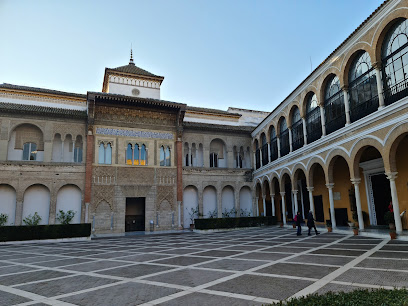
Torre del Oro
Discover the enchanting Torre del Oro in Seville, a historical fortress and maritime museum offering stunning views and rich cultural heritage.

Puente de Triana
Discover the stunning Puente de Triana, a historic iron bridge in Seville offering breathtaking views and a vibrant atmosphere, embodying the city's rich culture.

Mercado de Triana
Explore the Mercado de Triana in Seville – a vibrant fresh food market bursting with local flavors, culinary delights, and cultural experiences.
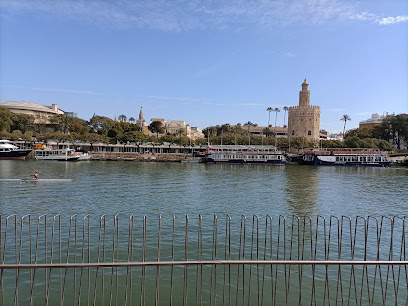
Palacio de las Dueñas
Explore the historic charm of Palacio de las Dueñas in Seville, a stunning palace filled with rich architecture, beautiful gardens, and fascinating stories.

Puente de San Telmo
Experience the stunning views and historic charm of Puente de San Telmo, a must-visit bridge in the heart of Seville.
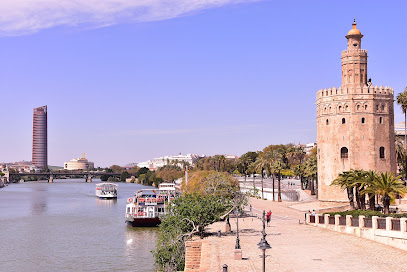
Barrio de Triana
Experience the vibrant culture and rich history of Barrio de Triana, Seville's charming neighborhood filled with tapas bars, flamenco, and artistic heritage.
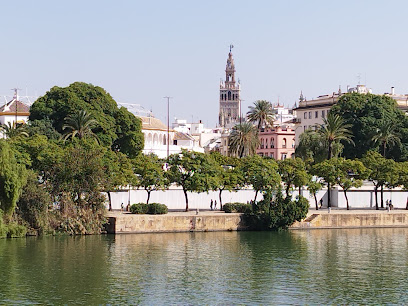
Centro Cerámica Triana
Discover the artistic heritage of Seville at Centro Cerámica Triana, a captivating handicraft museum showcasing traditional ceramics and local culture.
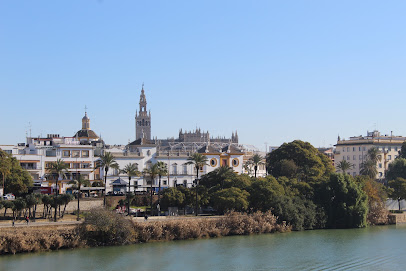
Vega de Triana Park
Explore the serene beauty of Vega de Triana Park in Seville, a lush urban oasis perfect for relaxation and family fun, with stunning river views.
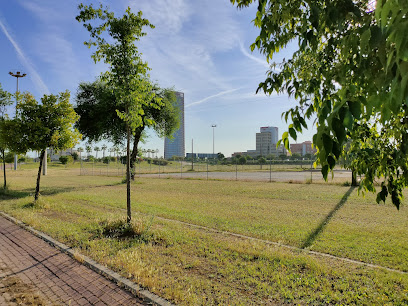
Lo Nuestro
Discover the sounds and rhythms of Seville at Lo Nuestro, where live music and vibrant nightlife come together in a cultural celebration.
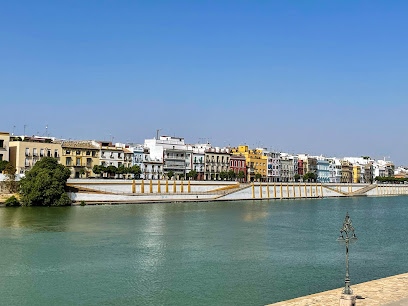
Pub La Tertulia
Discover the lively charm of Pub La Tertulia in Seville, where delicious tapas and a vibrant atmosphere create unforgettable moments.
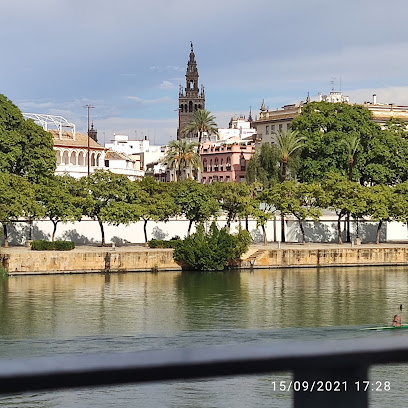
CERAMICA TRIANA
Explore the vibrant world of Andalusian ceramics at Cerámica Triana, a must-visit destination in Seville for unique pottery and cultural heritage.
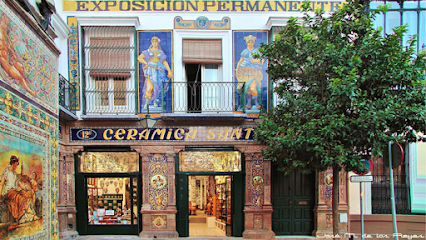
Museo Del Castillo De San Jorge
Explore the rich history of Seville at the Museo Del Castillo De San Jorge, where ancient artifacts reveal the city's captivating past.
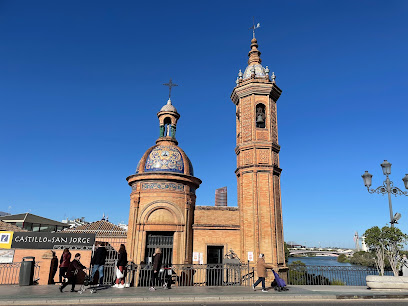
Triana House
Discover the charm of Seville at Triana House, a cozy hotel in the heart of the vibrant Triana district with easy access to local attractions.

Corral de vecinos, la casa de las flores
Explore the Corral de Vecinos, the House of Flowers, an enchanting historical landmark in Seville, rich in culture and breathtaking architecture.
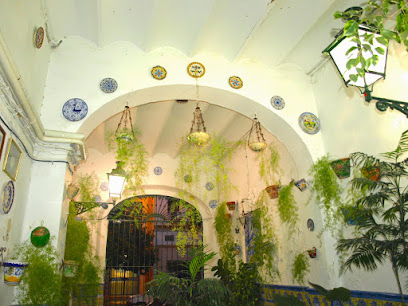
Unmissable attractions to see
Setas de Sevilla
Discover Setas de Sevilla, a stunning wooden structure offering breathtaking views and a vibrant atmosphere in the heart of Seville's historic Casco Antiguo.
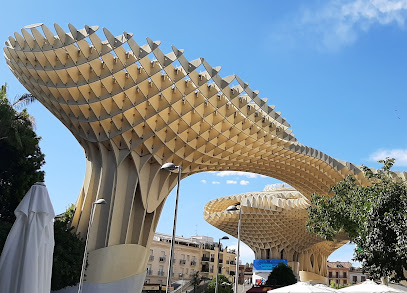
Patio de Banderas
Explore the serene beauty of Patio de Banderas, a historical gem in Seville filled with lush gardens and stunning architecture.
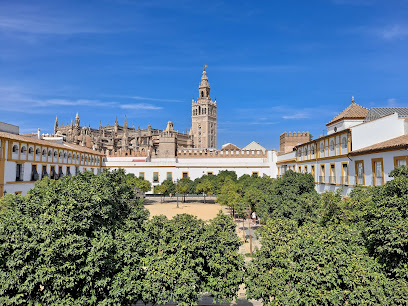
Centro Cerámica Triana
Explore the vibrant world of Andalusian ceramics at Centro Cerámica Triana, a cultural gem in the heart of Seville.
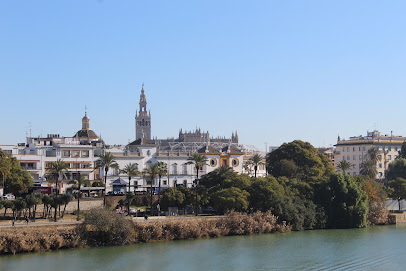
Turruñuelo - Marifé de Triana Park
Explore Turruñuelo - Marifé de Triana Park, a serene retreat in Seville featuring lush landscapes, cultural art, and breathtaking river views.
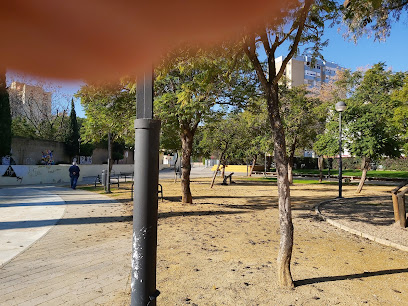
Río Guadalquivir
Explore the enchanting Río Guadalquivir in Seville, where culture, history, and stunning landscapes converge for an unforgettable experience.
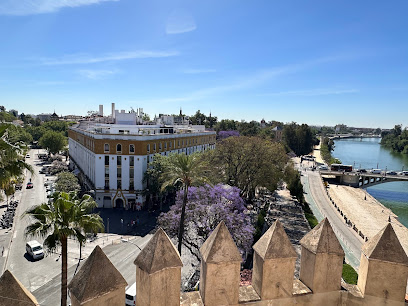
Urbane Kunst/ Streetart
Uncover the artistic spirit of Seville through its vibrant street art, a captivating blend of culture and creativity that transforms the city into a living gallery.
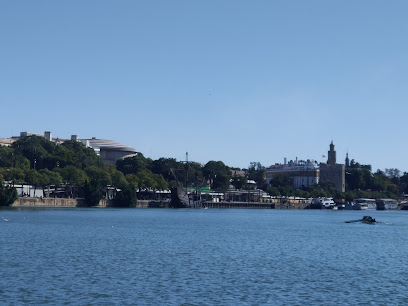
Essential places to dine
MaríaTrifulca
Experience exquisite Mediterranean fine dining at MaríaTrifulca, where innovative tapas meet breathtaking views in Seville.

Blanca Paloma
Discover authentic Spanish flavors at Blanca Paloma, a beloved grill restaurant in Triana, Seville - where tradition meets culinary excellence.
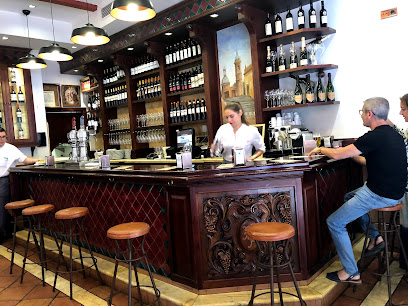
Abades Triana Restaurante
Experience the essence of Andalusian cuisine at Abades Triana Restaurante with stunning river views and exquisite dishes reflecting local flavors.
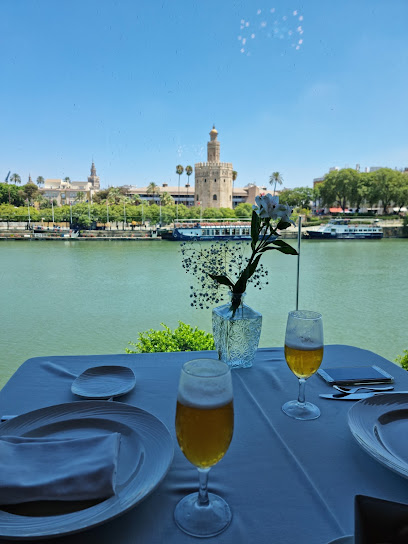
Restaurante El Sella Triana (Sevilla)
Experience authentic Spanish flavors at Restaurante El Sella Triana in Seville - a must-visit destination for food lovers.
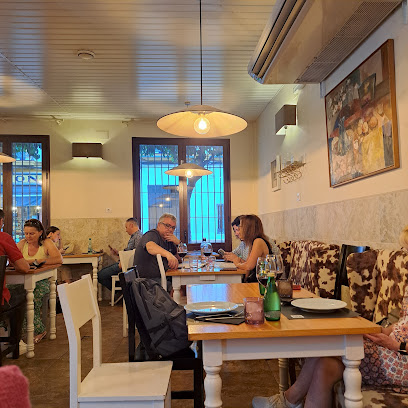
Restaurante De La O
Experience exquisite Mediterranean fine dining at Restaurante De La O in Seville, where culinary artistry meets warm hospitality.
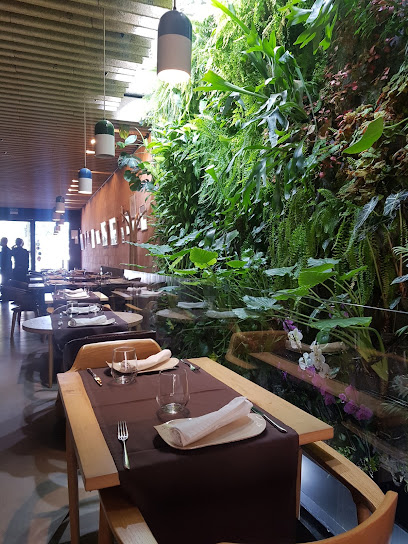
Vega 10
Discover the vibrant flavors of Vega 10, a fusion restaurant in Seville offering innovative dishes that blend global cuisines into one unforgettable dining experience.
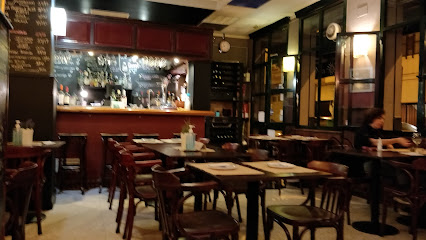
Betis 7 Triana Experience Restaurant
Discover Betis 7 Triana Experience Restaurant: where exquisite Andalusian flavors meet stunning river views in Seville.
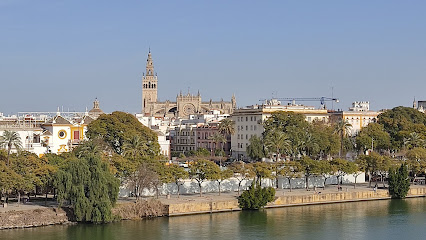
La Casa de María
Experience authentic Andalusian cuisine at La Casa de María in Seville - where tradition meets breathtaking riverside views.
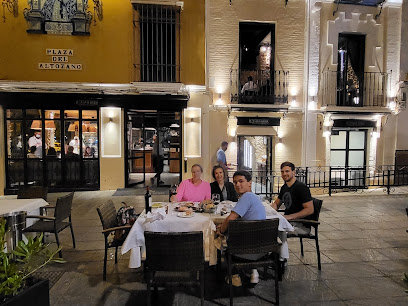
Restaurante El Candil Triana
Experience authentic Andalusian flavors at Restaurante El Candil Triana in Seville – a culinary delight waiting to be explored.
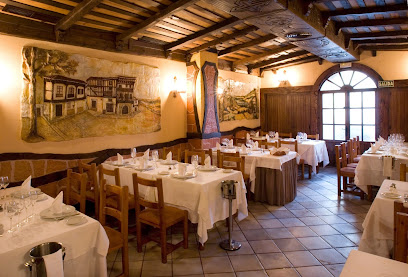
Restaurante Vela Azahares en Triana
Experience authentic Spanish cuisine and vibrant tapas at Restaurante Vela Azahares in Triana, Seville's culinary gem.

Markets, malls and hidden boutiques
ALE HOP
Discover ALE HOP in Seville, a unique gift shop offering a vibrant selection of quirky souvenirs and traditional Spanish treasures.
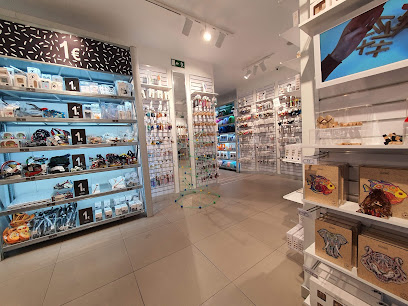
GAGO | Tienda de Ropa en Triana | Ropa de Mujer |Moda flamenca
Explore GAGO in Triana for exquisite women's clothing and flamenco fashion, capturing the vibrant essence of Andalusian culture.
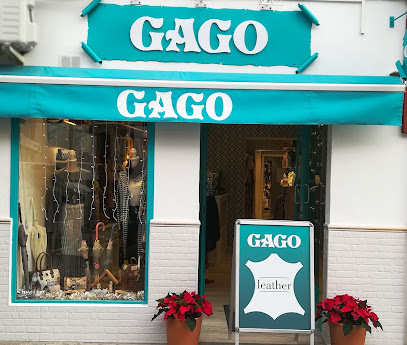
De Triana
Experience the essence of Seville at De Triana, where traditional Andalusian craftsmanship and local delicacies come together in a vibrant store.
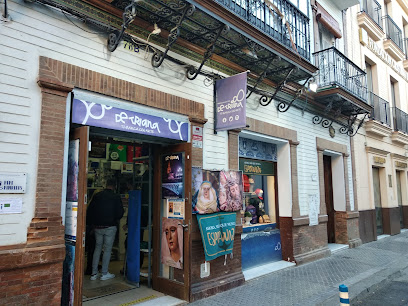
Nuva
Explore the latest trends at Nuva, Seville's premier clothing store, where fashion meets the vibrant culture of Andalusia.
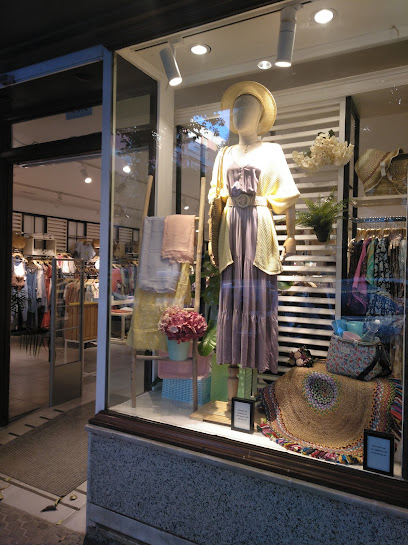
Concha Barral Souvenirs
Discover unique artisanal gifts and traditional Spanish souvenirs at Concha Barral Souvenirs in the heart of Seville, a true treasure for every traveler.
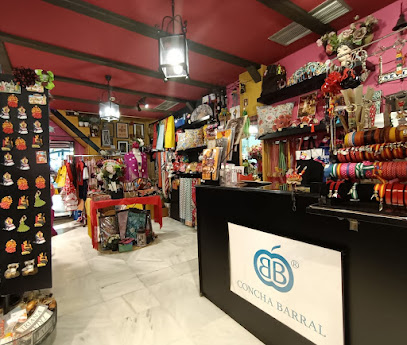
Zajara
Discover unique dresses and charming novelties at Zajara, a vibrant boutique in Seville offering quality merchandise for every taste.
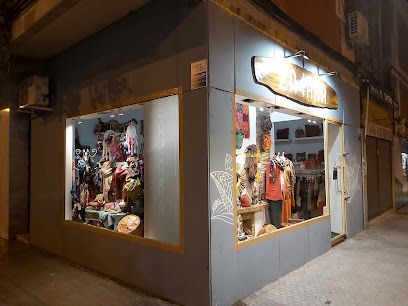
ZAZA
Discover unique fashion at ZAZA, a stylish clothing store in Seville offering local designer collections and contemporary styles.
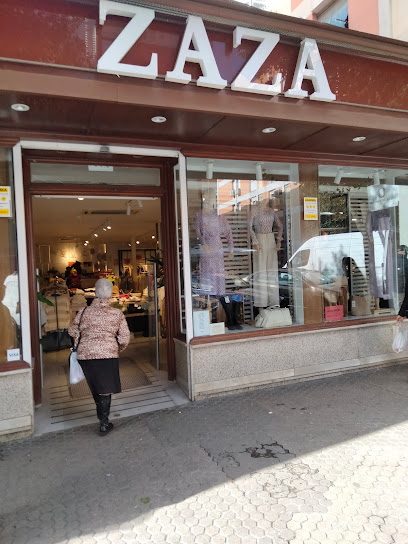
Arte Corte La Tienda del Jamón. Triana
Explore the rich flavors of Seville at Arte Corte La Tienda del Jamón, where authentic Spanish cured meats meet local culinary tradition.
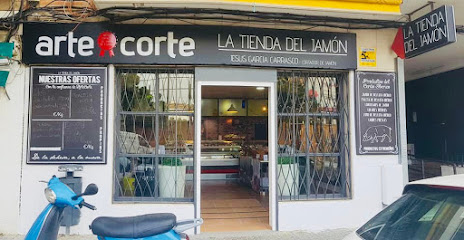
Don Regalón - Triana
Explore Don Regalón in Triana, your go-to gift shop for unique souvenirs and authentic Andalusian crafts in the heart of Seville.
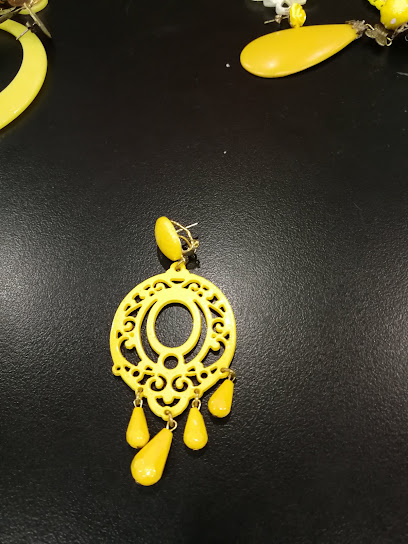
Quartier triana
Explore Quartier Triana, Seville's vibrant produce market and cultural hub, where culinary delights and traditional Andalusian charm meet.

Essential bars & hidden hideouts
Bar Triana
Experience authentic Andalusian flavors at Bar Triana, the premier tapas bar in Seville, where every dish tells a story of tradition and taste.
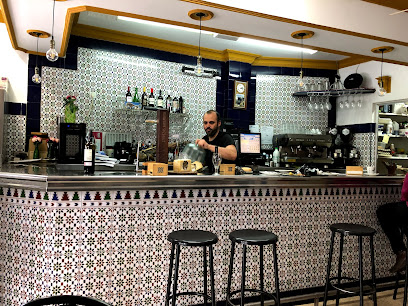
Baroness Bar
Experience the vibrant atmosphere of Baroness Bar in Seville, where delightful breakfasts and refreshing drinks await in a charming setting.
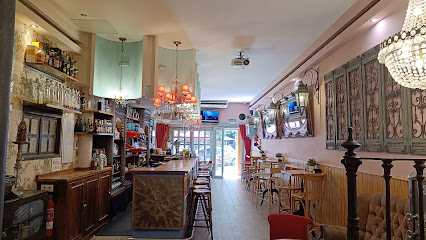
Bar La Fábula
Experience the vibrant flavors of Seville at Bar La Fábula, where authentic tapas and a lively atmosphere await every visitor.
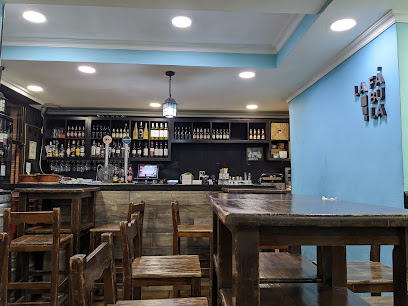
Bar Juan Carlos
Experience authentic Spanish tapas and lively atmosphere at Bar Juan Carlos, a must-visit bar in the heart of Seville.
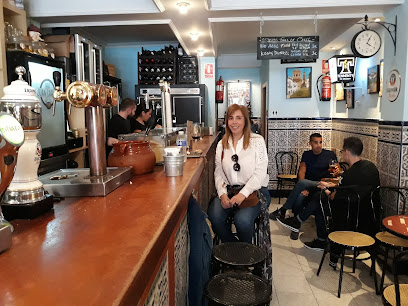
Triana Bar
Experience authentic Andalusian tapas in the heart of Seville at Triana Bar, where flavors and culture meet in a vibrant atmosphere.
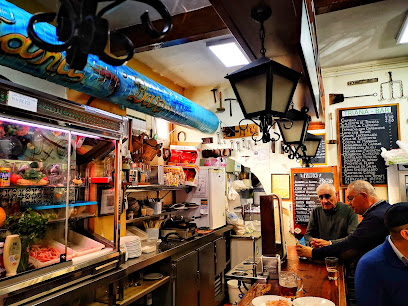
Premier
Discover the vibrant ambiance of Premier Cocktail Bar in Seville, where exquisite cocktails and a lively atmosphere await every visitor.
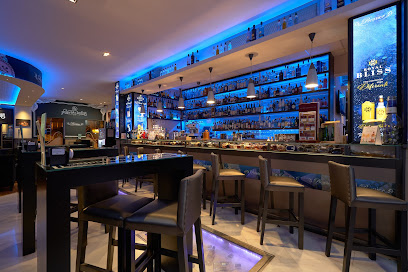
Copas en Triana Café Bar Arisha
Discover the vibrant essence of Seville at Copas en Triana Café Bar Arisha, where unforgettable drinks meet a lively atmosphere.
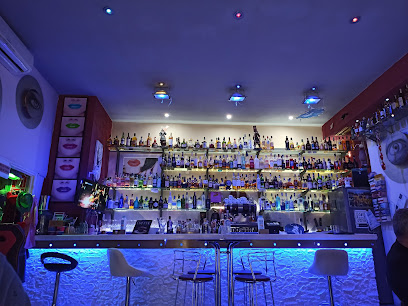
Pub La Tertulia
Discover the lively ambiance of Pub La Tertulia in Seville, where tapas and drinks meet the heart of Andalusian culture.
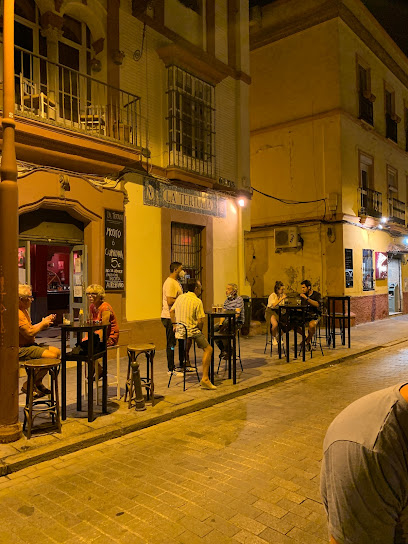
El Zielo de Triana
Experience the vibrant nightlife of Seville at El Zielo de Triana, where traditional charm meets modern flair in a welcoming bar atmosphere.
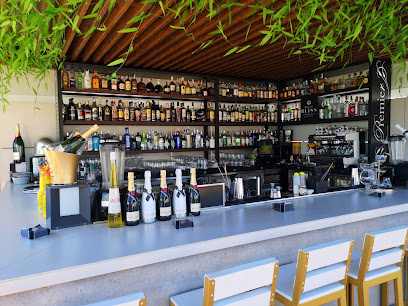
Ten cocktail bar
Discover Ten Cocktail Bar in Seville for an unforgettable mixology experience in a vibrant pub atmosphere, perfect for relaxation and socializing.
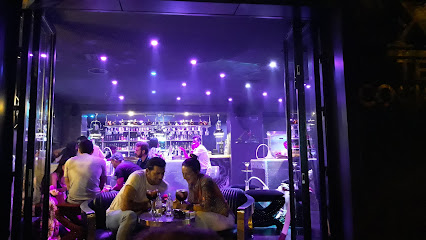
Local Phrases
-
- HelloHola
[oh-la] - GoodbyeAdiós
[ah-dee-ohs] - YesSí
[see] - NoNo
[no] - Please/You're welcomePor favor/De nada
[por fa-vor/de na-da] - Thank youGracias
[gra-thyas] - Excuse me/SorryPerdón/Lo siento
[per-don/lo syen-to] - How are you?¿Cómo estás?
[ko-mo es-tas] - Fine. And you?Bien. ¿Y tú?
[byen. ee too] - Do you speak English?¿Hablas inglés?
[ab-las in-gles] - I don't understandNo entiendo
[no en-tyen-do]
- HelloHola
-
- I'd like to see the menu, pleaseMe gustaría ver la carta, por favor
[me goos-ta-ree-a ver la kar-ta, por fa-vor] - I don't eat meatNo como carne
[no ko-mo kar-ne] - Cheers!¡Salud!
[sa-lood] - I would like to pay, pleaseMe gustaría pagar, por favor
[me goos-ta-ree-a pa-gar, por fa-vor]
- I'd like to see the menu, pleaseMe gustaría ver la carta, por favor
-
- Help!¡Ayuda!
[a-yu-da] - Go away!¡Vete!
[ve-te] - Call the Police!¡Llama a la Policía!
[ya-ma a la po-lee-thee-a] - Call a doctor!¡Llama a un médico!
[ya-ma a un me-diko] - I'm lostEstoy perdido/a
[es-toy per-dee-do/a] - I'm illEstoy enfermo/a
[es-toy en-fer-mo/a]
- Help!¡Ayuda!
-
- I'd like to buy...Me gustaría comprar...
[me goos-ta-ree-a kom-prar] - I'm just lookingSolo estoy mirando
[so-lo es-toy mee-ran-do] - How much is it?¿Cuánto cuesta?
[kwan-to kwe-sta] - That's too expensiveEs demasiado caro
[es de-ma-sya-do ka-ro] - Can you lower the price?¿Puedes bajar el precio?
[pwe-des ba-har el pre-thyo]
- I'd like to buy...Me gustaría comprar...
-
- What time is it?¿Qué hora es?
[ke o-ra es] - It's one o'clockEs la una
[es la oo-na] - Half past (10)Y media
[ee me-dya] - MorningMañana
[ma-nya-na] - AfternoonTarde
[tar-de] - EveningNoche
[no-che] - YesterdayAyer
[a-yer] - TodayHoy
[oy] - TomorrowMañana
[ma-nya-na] - 1Uno
[oo-no] - 2Dos
[dos] - 3Tres
[tres] - 4Cuatro
[kwa-tro] - 5Cinco
[theen-ko] - 6Seis
[say-ees] - 7Siete
[syet-te] - 8Ocho
[o-cho] - 9Nueve
[nwe-ve] - 10Diez
[dyez]
- What time is it?¿Qué hora es?
-
- Where's a/the...?¿Dónde está...?
[don-de es-ta] - What's the address?¿Cuál es la dirección?
[kwal es la dee-rek-thyon] - Can you show me (on the map)?¿Puedes enseñarme (en el mapa)?
[pwe-des en-se-nyar-me (en el ma-pa)] - When's the next (bus)?¿Cuándo es el próximo (autobús)?
[kwan-do es el pro-ksee-mo (ow-to-boos)] - A ticket (to ....)Un billete (a ...)
[oon bee-yet-te (a)]
- Where's a/the...?¿Dónde está...?
History of Triana
-
The history of Triana is deeply intertwined with the Moorish conquest of the Iberian Peninsula in the 8th century. Originally a gypsy settlement, Triana became a significant part of Seville, known for its distinctive pottery and vibrant culture. During the Almohad dynasty, the area developed as a key location for artisans and traders, establishing its reputation as a center for ceramics that continues to this day.
-
In the 16th century, Triana flourished as a vital part of Seville's maritime trade empire. The neighborhood served as the departure point for numerous expeditions to the New World. Renowned figures such as Hernán Cortés and Ferdinand Magellan set sail from the docks of Triana, contributing to its historical significance as a gateway to exploration and colonial expansion.
-
During the Spanish Inquisition, which began in the late 15th century, Triana witnessed significant religious and social changes. The neighborhood, home to a diverse population including Jews and Muslims, faced persecution and expulsion. This period marked a shift in the cultural landscape of Triana, as the remnants of its multicultural past began to diminish, leading to a more homogenous Christian community.
-
The 19th century brought the Industrial Revolution to Seville, and with it, Triana experienced rapid urbanization and economic development. The establishment of factories and the expansion of the river port fostered an influx of workers and transformed the neighborhood into a bustling industrial hub. This period also saw the construction of new infrastructure, including bridges connecting Triana to the rest of Seville.
-
In the 20th century, Triana became synonymous with the art of flamenco. The neighborhood nurtured countless performers and artists, solidifying its reputation as a cultural epicenter. Festivals celebrating flamenco music and dance attracted visitors from all over, while local venues and peñas (flamenco clubs) became crucial for the preservation and evolution of this passionate art form.
Triana Essentials
-
Triana is easily accessible from other neighborhoods in Seville. You can take the Metro Line 1 to the Plaza de Cuba station, which is a short walk from the heart of Triana. Alternatively, several bus lines, including lines 40 and 43, connect Triana with other neighborhoods. If you prefer walking, you can cross the iconic Puente de Isabel II bridge from the city center, which offers scenic views of the Guadalquivir River.
-
Triana is a walkable neighborhood, and many attractions can be reached on foot. Public transport options include buses and the metro. Bicycles are also a popular way to explore the area, with several bike rental shops available. For greater convenience, taxis and ride-sharing services like Uber operate in the area. The local Sevici bike-sharing program allows you to rent bikes for short trips throughout the neighborhood.
-
Triana is generally safe for tourists, but it's wise to remain vigilant, especially in crowded areas like markets and popular tourist spots. Petty crime, such as pickpocketing, can occur. Areas such as the outskirts of the neighborhood, particularly at night, may have higher crime rates, so it's advisable to avoid poorly lit streets. Always keep your belongings secure and be cautious when withdrawing money from ATMs.
-
In case of an emergency, dial 112 for police, fire, or medical assistance. The local hospital, Hospital Universitario Virgen del Rocío, is equipped to handle emergencies. It's advisable to have travel insurance that covers medical emergencies. For minor health issues, local pharmacies can provide over-the-counter medications and advice.
-
Fashion: Do wear comfortable shoes as you will likely walk a lot. Avoid beachwear outside of the pool or beach areas. Religion: Do be respectful at local churches and religious sites; dress modestly and cover your shoulders. Public Transport: Do be courteous to others and give up your seat for those in need. Don't eat or drink on public transport. Greetings: Do greet locals with a friendly 'Hola' and a smile. Avoid being overly loud or disruptive. Eating & Drinking: Do try local tapas and enjoy meals at leisure. Don't rush your meal; dining is a leisurely affair in Spain.
-
To experience Triana like a local, visit the bustling Mercado de Triana for fresh produce and local delicacies. Don't miss out on the flamenco shows at local tablaos, which showcase the neighborhood's rich cultural heritage. Engage with local artisans, especially in ceramics, as Triana is known for its pottery. Consider joining a local cooking class to learn how to prepare traditional Andalusian dishes for an immersive experience.
Trending Landmarks in Triana
-
Royal Alcázar of Seville
-
Torre del Oro
-
Puente de Triana
-
Mercado de Triana
-
Palacio de las Dueñas
-
Puente de San Telmo
-
Barrio de Triana
-
Centro Cerámica Triana
-
Vega de Triana Park
-
Lo Nuestro
-
Pub La Tertulia
-
CERAMICA TRIANA
-
Museo Del Castillo De San Jorge
-
Triana House
-
Corral de vecinos, la casa de las flores
Nearby Cities to Triana
-
Things To Do in Huelva
-
Things To Do in Cádiz
-
Things To Do in Ronda
-
Things To Do in Casemates Square
-
Things To Do in Moorish Castle
-
Things To Do in Gibraltar
-
Things To Do in Main Street
-
Things To Do in Catalan Bay
-
Things To Do in Queensway Quay Marina
-
Things To Do in Alameda Botanic Gardens
-
Things To Do in St. Michael's Cave
-
Things To Do in Gorham's Cave Complex
-
Things To Do in Europa Point
-
Things To Do in Málaga
-
Things To Do in Faro












